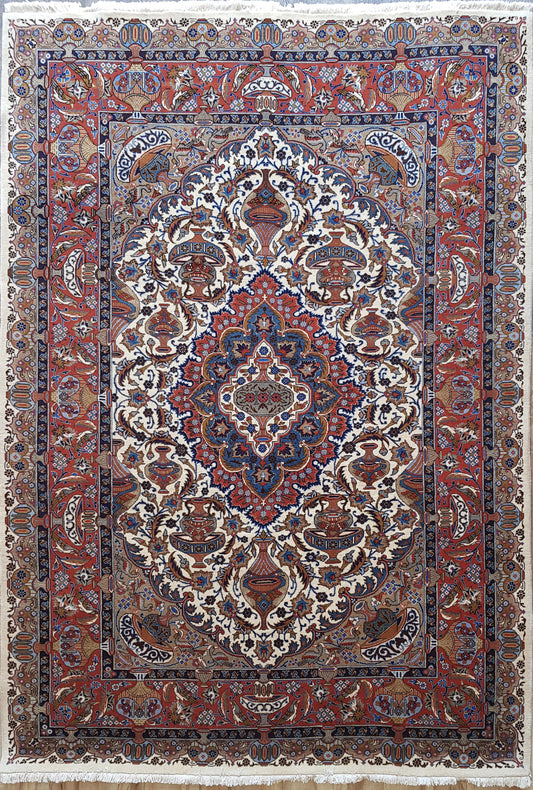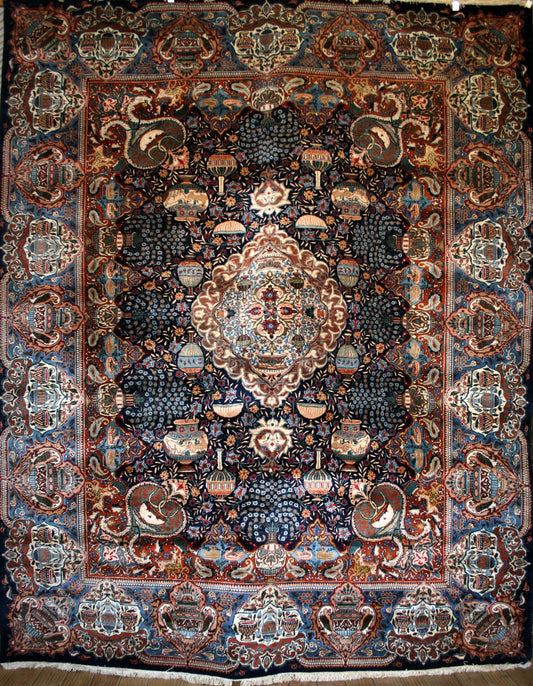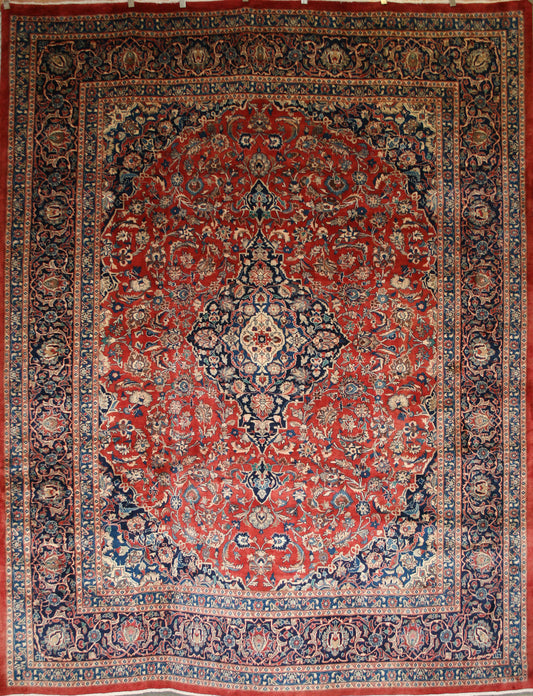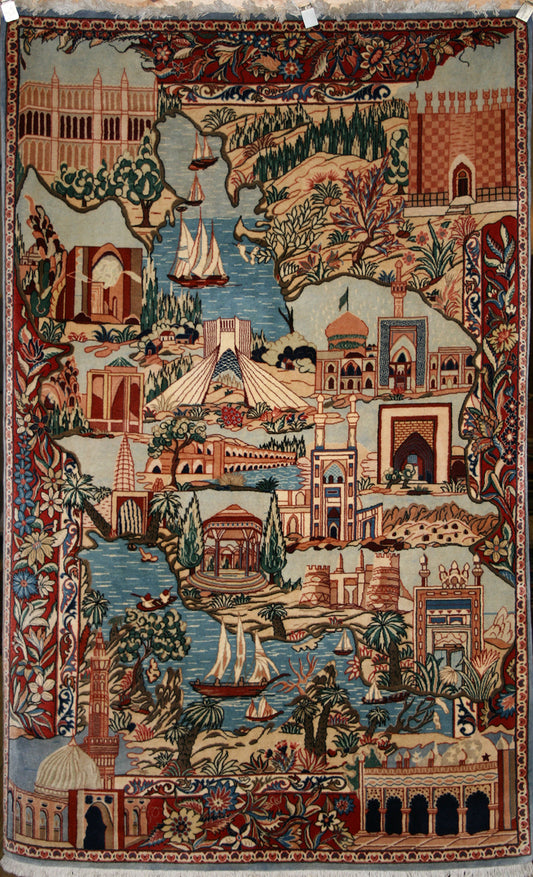Kashmar Rug History & Origin Guide
Discover the Legacy of Kashmar Rugs
Immerse yourself in the rich history and intricate designs of Kashmar rugs, a unique and captivating style of Persian rug. Renowned for their high quality and exceptional craftsmanship, Kashmar rugs are true embodiments of Persian rug-making traditions. Let's explore the origins, culture, and symbolism behind these beautiful works of art.
History of Kashmar
Kashmar is located in the Razavi Khorasan province in northeastern Iran. The city has a deep historical lineage, with archaeological evidence pointing to settlements as early as the 3rd millennium BC. Kashmar has been a hub of cultural and economic activity for centuries, owing to its strategic location along the ancient Silk Road.
The Art of Rug Making in Kashmar
Kashmar's location and history have played crucial roles in shaping its rug-making traditions. The city's weavers have had access to a vast array of influences, from the nomadic tribes of Central Asia to the refined aesthetic traditions of Persia's urban centres. This blend of cultural influences is reflected in the diverse designs and motifs found in Kashmar rugs.
The art of rug-making in Kashmar reached its pinnacle during the Safavid dynasty (1501-1736), a golden age for Persian arts and culture. Safavid rulers were great patrons of the arts, and their support led to the development of new weaving techniques, dyeing methods, and design motifs. The influence of this period can still be seen in Kashmar rugs today.
Unique Designs of Kashmar Rugs
Kashmar rugs are known for their intricate designs and vibrant colours. A signature design feature of these rugs is the ‘Zir Khaki’ pattern, which means 'under the soil'. This design depicts historical scenes and stories from Persian mythology and is a testimony to the artistic creativity of Kashmar's weavers.
The rugs often feature pictorial scenes, including hunting scenes, tree of life motifs, and images from the epic poem, the Shahnameh. These designs are not just visually stunning, but they also serve as a narrative medium, preserving and conveying Persian myths and legends to future generations.
Colours and Materials
The colours used in Kashmar rugs are rich and varied. Deep blues and reds are common, along with a range of other hues including ivory, green, and brown. These colours are derived from natural dyes, with ingredients sourced locally. The use of natural dyes not only provides vibrant colours but also ensures the rugs retain their colour over time.
As for the materials, Kashmar rugs are traditionally woven with high-quality wool. The wool is sourced from local sheep, known for their high-quality fleece. The foundation of the rugs, or the 'warp and weft', is usually made of cotton. Occasionally, silk is used in the pile to highlight elements of the design.
Knotting Details
Kashmar rugs are woven using the Persian (Senneh) knot, a style of knotting unique to Persian rugs. These rugs typically exhibit a high knot density, often exceeding 120 knots per square inch. This high knot density allows for intricate, detailed designs and contributes to the durability of the rug. The tight weaving and quality materials ensure that Kashmar rugs are hard-wearing, making them a lasting investment.
Famous Weavers and Workshops
While there are numerous weavers and workshops in Kashmar, the region's rugs are more recognised for their distinct style rather than individual weavers. Nevertheless, each Kashmar rug is the result of countless hours of skilled labour and artistic vision, and the name of the weaver is often woven into the rug itself, serving as a signature of their work.
Demographics and Location
Kashmar is situated in northeastern Iran and has a population of around 100,000. The city's location along the historical Silk Road has made it a melting pot of cultures and traditions, and this diversity is reflected in the city's rug-making tradition.
Nearby Rug-Producing Areas
Several cities and regions around Kashmar are known for their rug-making traditions. The most notable among these is Mashhad, a city renowned for producing high-quality Persian rugs. Other nearby rug-producing areas include Birjand, Nain, and Tabriz.
Climate and Weather
Kashmar has a desert climate, with hot summers and cold winters. The city receives little rainfall, which is typical of the region. Despite these conditions, Kashmar has thrived, thanks in part to its access to water from the nearby mountains.
Top Tourist Destinations
Kashmar offers several attractions for tourists. The city's historical sites, including the ancient city of Nishapur, the tomb of Ferdowsi, and the Khayam and Attar mausoleums, are of particular interest. The city's rich cultural heritage and its status as a centre for Persian rug-making make it a fascinating destination for tourists interested in Persian history and culture.
If you're planning a trip to Kashmar, a visit to the local rug workshops should be on your itinerary. These workshops offer a unique opportunity to witness the rug-making process firsthand and gain a deeper appreciation for this ancient craft.
For those who are fascinated by Kashmar rugs and wish to explore their captivating world, we invite you to browse our current collection of Kashmar rugs.
Browse Our Current Selection of Kashmar Rugs
-
Persian Kashmar Runner Rug
Regular price £1,290.00Regular priceUnit price per -
Persian Kashmar Rug
Regular price £2,795.00Regular priceUnit price per -
Semi-Antique Persian Kashmar Rug
Regular price £3,475.00Regular priceUnit price per£3,995.00Sale price £3,475.00Sale -
Persian Kashmar Rug
Regular price £5,045.00Regular priceUnit price per -
Persian Kashmar Rug
Regular price £3,995.00Regular priceUnit price per





